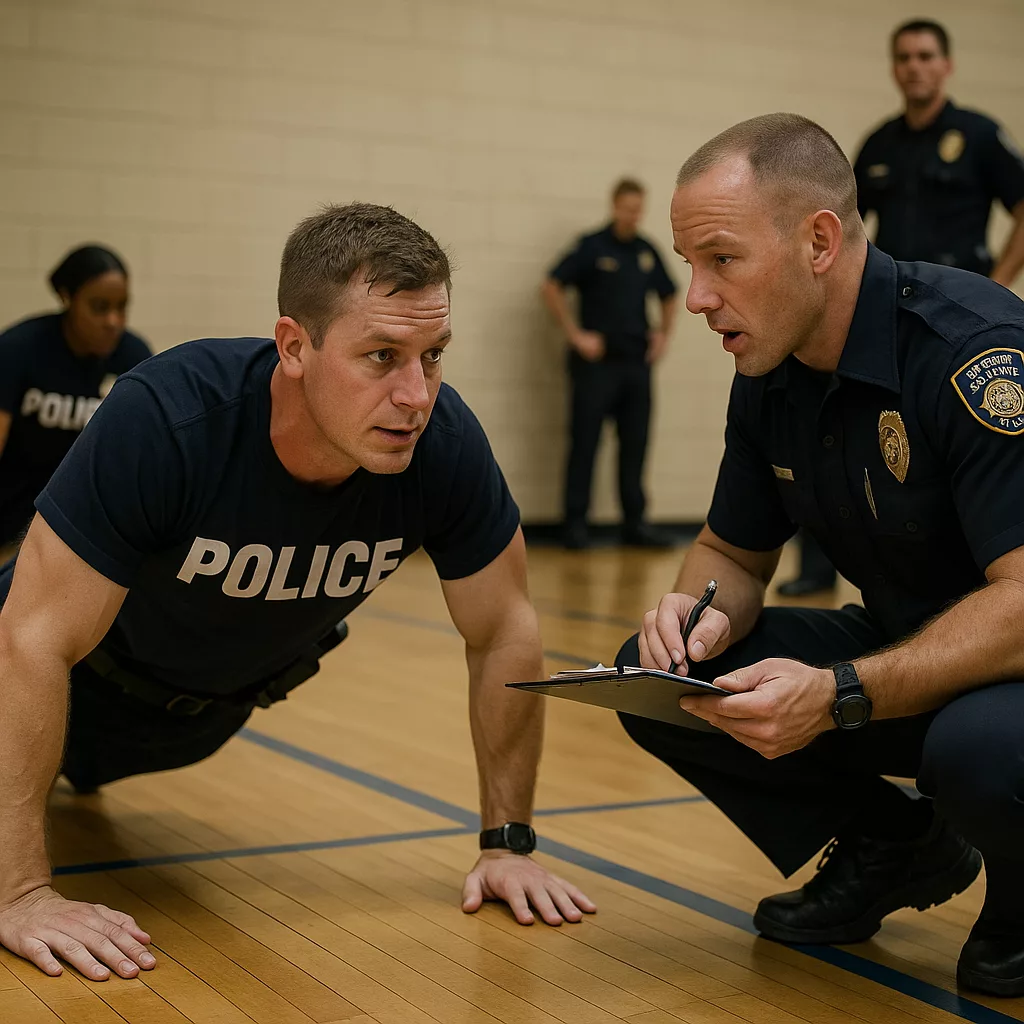
How Fit Do I Need to Be for a Career in Policing? Part 2
Alright, so now you know all about the fitness components of the A-PREP and the kinds of physical demands you’ll encounter in class after you pass it. But let’s not get ahead of ourselves. How do you prepare for the test?
When reading the test requirements, you’ll notice that at the end of the day, you need to be strong, fast, and a good runner. So how do you focus your training when you need to be above average at, well, everything? The simplified answer is to be strategic about it.
Here’s how we start:
Stop and reflect on your current fitness status. How much physical activity are you doing, and how fit are you? When figuring out where you stand in relation to the A-PREP requirements, do two things:
- Subjectively assess yourself compared to the general population. Keep in mind the A-PREP doesn’t adjust standards based on age or gender (you’ll need to compare yourself against everyone). Do you feel like you are about as strong as the next person? How does your running stack up in everyday situations, like a rec league soccer game or sprinting for the bus? What about strength—how easy is it for you to get your winter tires out of the garage or give your partner a piggyback?
- Objectively measure your fitness. Set up and practice the shuttle run (found in Part 1) and see how you fair. Then try to squat, push and pull the 34kg load used in the test and see how many reps you can do.
Can you identify any areas of weakness?
If not, you’re good to go.
Now, for the rest of us: be honest with yourself and create a training schedule you can commit to and that addresses your individual needs. Focus on gradual and progressive improvement from where you are presently.
There’s flexibility in how much time you should train each component (depending on your strengths and weaknesses), but the basic training principles will stay the same. A general recommendation is to complete strength training 2–3x per week and aerobic (running or circuit) training 2–4x per week. If you know you are strong, you might want to devote more days to cardio. Or, conversely, if you can run like the wind; but strength has never been your forte, you should start making the lifting sessions your priority.
My approach to training is to concentrate on developing good movement patterns and progressively increase reps/duration/load over time. Since you’ll be training both running and lifting concurrently, we need to be careful not to do so much in the weight room that it negatively affects your ability to run – or vice versa.
In each strength session, complete a full-body workout focusing on multi-joint movements that incorporate the five foundational movement patterns: Squat, Hinge, Push, Pull, and Carry. This type of plan gradually builds strength over time, without being too fatiguing (it’s also how the recruits at Edmonton Police Service train).
For a running plan, you are going to integrate two types of runs: first, aerobic base training runs that will build capacity to run longer; and second, interval-style runs that will improve speed and efficiency.
So, what does all that look like? Here is a sample schedule for a typical training week in preparation for the A-PREP for someone who needs to focus on both strength and cardio:
Monday: Full Body Strength
- Front Squats (Squat), Good Morning (Hinge), Dumbbell Bench Press (Push), Dumbbell Bent-Over Rows (Pull), Farmer’s Walk (Carry). Optional: Face Pulls, Side Planks, Glute Bridges.
Tuesday: Interval Run (Choose A or B)
- Dynamic warm-up
- Warm up: 5 min easy run or brisk walk
- Option A: 4–6 rounds of 1 min fast run / 2 min easy run
- Option B: 6–12 sets of running strides – accelerate to 90–95% of top speed for 10-15s, followed by a 30–45s recovery jog
- Cool down: 5 min easy run or walk
Wednesday: Circuit Training
- Dynamic warm-up
- 4 rounds of 30s work / 15s rest; cycle through each exercise one at a time completing as many reps as possible during the “work bout”: Bodyweight Squats, Push-ups, Lunges, Burpees, Front Plank, Leg Lowers
Thursday: Rest Day
- Self-care and recovery. Stretching, foam rolling, additional physio exercises, etc.
Friday: Full Body Strength
- Pause Goblet Squats (Squat), DB Romanian Deadlifts (Hinge), DB Single-Arm Overhead Press (Push), 3s Eccentric Chin-ups (Pull), Weighted Step-ups (Carry). Optional: Band Pull-Aparts, Partial Curl-Ups, Dead Bug
Saturday: Aerobic Training Run (Choose A or B)
- Option A: Run for 25–30 minutes, keeping a conversational pace
- Option B: 5–6 rounds of 5 min run / 1 min walk
Sunday: Rest Day
- Self-care and recovery. Stretching, foam rolling, additional physio exercises, etc.
Once you feel you have made improvements to your fitness level, self-assess before you take the A-PREP or attend an orientation session to try all components. Finally: do yourself a favour and make sure you can complete the shuttle run before you arrive. Treat it like a practice test and go in knowing you have the answer. Good luck!
A strength and conditioning coach like the ones at Connect can take the guesswork out of prepping for the A-PREP. You can start with a free consultation and learn how Connect can help you reach your fitness goals.
Jeremy Potter
BKin, CSCS, CEP
Physical Training Instructor at Edmonton Police Service

